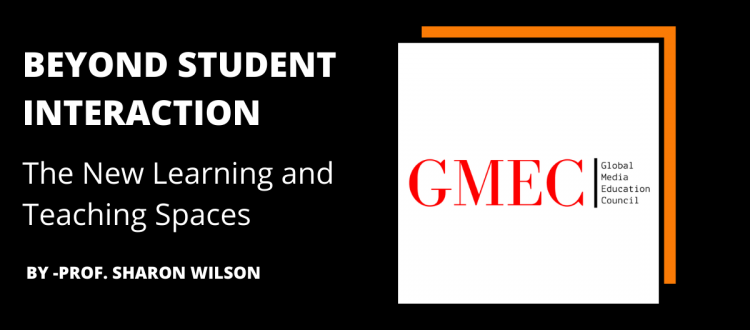Beyond Student Interaction: The New Learning and Teaching Spaces
The Covid-19 pandemic has created an unexpected crisis that has caused a shift in the way teaching and learning is conducted. This has brought out a drastic change in the educational system not only in Malaysia but rather the entire world as they have moved to virtual classes suspending physical classrooms. In the beginning of its use, online learning was introduced as a less-preferred alternative to the traditional face-to-face classroom. Online learning was used in a very limited number of universities, and it was used minimally as a platform to provide extra exercises and to administer classroom management such as filing students’ grade and students attendance.
The social and communicative exchanges between student and teacher, as well as student to student, are a prevalent feature of learning in a regular classroom setting. The capacity to ask a question, voice an opinion with a classmate, or disagree with a reading assignment’s point of view are all essential learning activities. Early studies undertaken into student interactions in the a physical lecture theatre found that students seating placement contributed to discussions, performance and likability (Holliman and Anderson, 1986; Marshall and Losonczy-Marshal, 2007; Kalinowski and Taper, 2007 and Perkins and Wieman, 2005). The concept of belonging to a group has also received attention. Listening to the discussions and chosing to raise a hand to comment, to answer or to ask a question are further activities carried out in a physical classroom. Although some of these activities can be done in an online class nevertheless, student engagement, inteaction and the ability to interact with other students and the instructor remains a challenge and a daunting task on the instructor.
Many online courses provide students and faculty, and students and students the ability to interact with each other via an electronic bulletin board, discussion board, email, or synchronous chat areas. The success of these courses frequently depends upon the nature of this interaction. Web-based learning requires adjustments on the part of students and teachers for successful interactions to occur. One important element in an online class is the visual presentation of self. This is explained as the turning on or off of the camera during class. Allowing students to turn on and off their cameras and microphones when they choose, the use of activities that enable nonthreatening interactions with the instructor and a means of self-checking within diverse peer groups may well result in increased engagement with the material. (Castelli and Sarvary 2021).
A pilot study conducted in my classroom made me try and understand the generation that i am teaching and how I can use the traits and characteristics of millenials and GenZ to better student interaction and engagement. My presentation will address 1) why sudents turns on and off their cameras 2) student preferences in learning 3) teaching tools and what they would like to expect from an online class and 4) some tips on how to ensure the classroom interactivity is maintained and to ensure a move from pedagogy to androgogy. It is not recommended that the precise patterns found here can be reproduce in any particular situation; rather, the pattern of student engagement can lead to ideas, further discussions and and perhaps creative ways to help in your own classroom engagement.
References:
Castelli, F. R., & Sarvary, M. A. (2021). Why students do not turn on their video cameras during online classes and an equitable and inclusive plan to encourage them to do so. Ecology and Evolution, 11(8), 3565-3576.
Holliman WB and Anderson HN (1986) Proximity and student density as ecological variables in a college classroom. Teach Psychol 13, 200–203.
Kalinowski S and Taper ML (2007) The effect of seat location on exam grades and student perceptions in an introductory biology class. J Coll Sci Teach 36, 54 –57.
Marshall PD and Losonczy-Marshall M (2010) Classroom ecology: relations between seating location, performance, and attendance. Psychol Rep 107, 567– 577.
Perkins KK and Wieman CE (2005) The surprising impact of seat location on student performance. Phys Teach 43, 30–33

